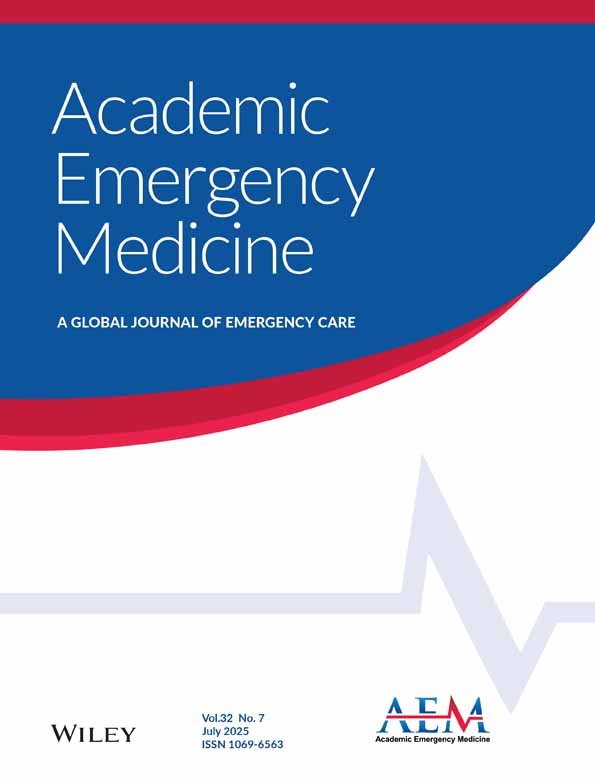Return to the Emergency Department among Elders: Patterns And Predictors
Abstract
Objectives: 1) To describe the pattern of return visits to the emergency department (ED) among elders over the six months following an index visit; 2) to identify the predictors of early return (within 30 days) and frequent return (three or more return visits in six months); and 3) to evaluate a newly developed screening tool for functional decline, Identification of Seniors At Risk (ISAR), with regard to its ability to predict return visits. Methods: Subjects were patients aged 65 years or more who visited the EDs of four Canadian hospitals during the weekday shift over a three-month recruitment period. Excluded were patients who: could not be interviewed, due either to their medical conditions or to cognitive impairment, and no other informant was available; refused linkage of study data; or were admitted to hospital at the initial (index) visit. Measures made at the index ED visit included: 27 self-report screening questions on social, physical, and mental risk factors, medical history, use of hospital services, medications, and alcohol. Six of these questions comprised the ISAR scale. Return visits and diagnoses during the six months after the index visit were abstracted from the utilization database. Results: Among 1,122 patients released from the ED, 492 (43.9%) made one or more return visits; 216 (19.3%) returned early and 84 (7.5%) returned frequently. Earlier returns were more likely than later returns to be for the same diagnosis (p = 0.003). Using logistic regression, hospitalization during the previous six months, feeling depressed, and certain diagnoses predicted both early and frequent returns. Also, a history of heart disease, having ever been married, and not drinking alcohol daily predicted early return; a history of diabetes, a recent ED visit, and lack of support predicted frequent use. Conclusions: In the first month after an ED visit, return rates are highest and are more likely to be for the same diagnosis. Both medical and social factors predict early and frequent returns to the ED; patients at increased risk of return can be quickly identified with a short, self-report questionnaire. The ISAR screening tool, developed to identify patients at increased risk of functional decline, can also identify patients who are more likely to return to the ED.




